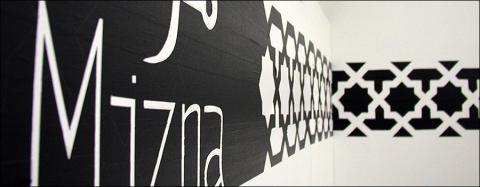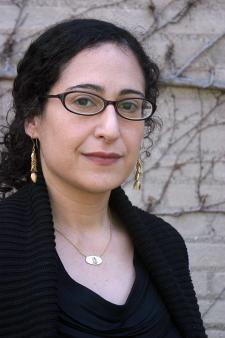This blog originally appeared as the introduction to a section of Arab American Poetry in NAR 302.2 (Spring 2017).
If there were ever a time for politically galvanizing literature, this is it. But, perhaps not in the way you might expect. It’s true that hateful political rhetoric has won the day and is making way for a bewildering political reality. The intolerance that has been normalized is sobering, with hate crimes on the rise against Arabs, Muslims, and brown and black people in general—bigotry does not see nuance. The president’s early executive orders, including the travel ban on seven Muslim-majority countries, are having a chilling effect on immigrant communities, affecting the fate of refugees, splitting up families, and costing people their jobs. Whatever the outcome of the ensuing legal battle regarding the travel ban, it has already inserted chaos into the lives of the vulnerable.
We must remember that current forces of fear and hate are not new. The presidential election of 2016 did not create xenophobia and Islamophobia. Neither did 9/11, for that matter. Before the term Islamophobia was coined, there was (and continues to be) Orientalism, one of the destructive legacies of colonialism. Defined by the late scholar and cultural critic Edward Said, the Orientalist framework positions Asian and North African societies in opposition to the European ideal, with the former depicted as barbaric, irrational, and culturally stagnant and the latter as civilized, rational, and innovative. This centuries long, systematic depiction of Arabs and Muslims as the fundamentally different Other has been a useful and necessary tool to justify extraordinary imperialism—occupations, resource pillaging, and long wars fought increasingly from a safe distance.
And what does this mean for Arab and Muslim American writers? The fact is the current literary landscape reflects our community: it is vast, rich, dynamic, and inventive. There are poets like Philip Metres, who is writing polyvocal poems and weaving redacted text into his writing; Fady Joudah, who has written a book of “textus,” poems limited to 160 characters, haikus for the text and tweet era; and Marwa Helal creating a new poetic form that has the reader approach the text from right to left, as one reads Arabic. There are prose authors like Laila Lalami imagining the story of Mustafa el-Zamori, or Estebanico, the first Muslim explorer of America, a Spanish slave from North Africa; Randa Jarrar, who writes fearless characters with bawdy humor and tackles topics like destructive familial expectations while being clear-eyed about how her work might superficially be read to confirm Arab stereotypes; and the masterful Rabih Alameddine, whose rich novels convey narratives of his multiple identities: Arab, American, gay, artist, self-described misanthrope. Not to mention lauded writers Naomi Shihab Nye, Suheir Hammad, Diana Abu-Jaber, and Etel Adnan. This is by no means an exhaustive list, and neither does it reflect the long legacy of Arab American writing that has its roots during the turn of the last century when Kahlil Gibran, Ameen Rihani, and their contemporaries made up al-Mahjar, or the Pen League.
It’s difficult, and wonderfully so, to neatly group contemporary Arab American writers under one banner. Despite the burden of being an Arab in America, these writers write their own truths and create new worlds, and they’re doing it on their own terms. Mustafa Bayoumi asks in the title of his book on the subject of being young and Arab in America, the W.E.B Du Bois–inspired question, How Does it Feel to Be A Problem? In their multitude of ways, Arab American authors seem to refuse this premise, and in doing so, write their individual humanities into the American canon.
This is evident in the work of the three Arab American writers presented here and simultaneously published in the upcoming issue of our literary journal, Mizna: Prose, Poetry, and Art Exploring Arab America, with its special theme called “Surviving.” This theme was a call to our community of writers, thinkers, and readers, to examine how they are surviving this political moment; how they confront, sidestep, or outright reject the spotlight they’re cornered into with regard to identity. Hala Alyan, Hayan Charara, and Glenn Shaheen are not at all a strategic representation of predominant approaches to “surviving” on the part of Arab Americans, but simply three exciting and important voices from our hyper-politicized demographic, each adding their idiosyncratic writing to a diverse body of work labeled Arab American.
Hala Alyan’s pieces show a concern for the tensions of diaspora, transnationalism, family, and exile. Glenn Shaheen’s poems seem preoccupied with the insidious ways that identity, war, and globalization surface and conflate in every day life. And Hayan Charara’s loose sonnets almost thrill in the banality and brittleness of love and death. Whether speaking about their experience through explicit autobiography, in couched political terms, or in intimate existentialism, these writers speak as Arab Americans, but not for them—and that is the critical distinction.
As a platform for Arab American art, Mizna seeks to strike this balance between needed public representation of a vilified people group, and simply presenting its breadth of narratives, cares, histories, and futures with a forthright disregard for the flattening that comes with attempting to present a united front. We believe that over the 17 years of publishing our literary journal, the 11 editions of our Twin Cities Arab Film Festival, and many other multidisciplinary projects, the accumulation of creative expression we’ve showcased is a record of how irreducible Arab and Muslim Americans are.
We’re thrilled to present these three writers as a part of that work here in North American Review, and we invite readers to continue to weave such vital contemporary work into the canon of American writing.





